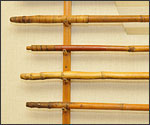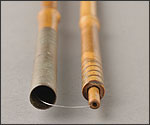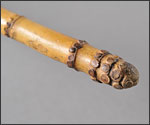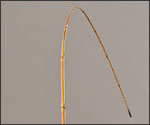Shonai-zao (fishing rod) (Tsuruoka City)
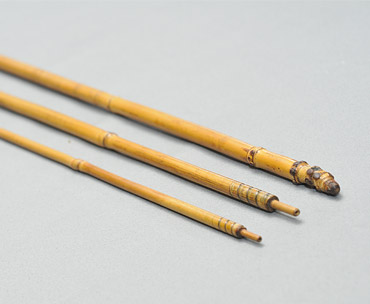
History/Outline
Shonai fishing rod making developed during the Edo period (1603-1868) in the Shonai area of northwest Yamagata Prefecture under the reign of the Shonai Clan, which encouraged its samurai warriors to do fishing at the beach.
More than 200 years ago the Shonai Clan Lord Sakai encouraged his clansmen to do fishing as a kind of martial art to strengthen their bodies and minds, and fishing has been popular ever since then. Clansmen made their own
fishing rods using local wild bamboo and competed with each other in catching Kuro-dai (black porgy fish). Through time, professional fishing rod artisans appeared, bringing about excellent fishing rods.
In the Showa period (1926-1989) master artisan Zensaku Yamanouchi completed the Rasen-Tsugizao rod, which was collapsible for greater portability.
In the Showa period (1926-1989) master artisan Zensaku Yamanouchi completed the Rasen-Tsugizao rod, which was collapsible for greater portability.
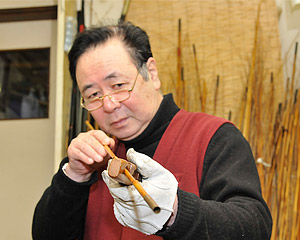
Techniques/Characteristics
Artistic craft made from one pole of natural bamboo by letting it grow straight for several years
In the Shonai region only Tokiwa Tsurigu-ten (fishing shop) continues to make and sell rods, drying 4-5 year old bamboo trees harvested at Yuza Town.
The straightening process then takes an additional 3-4 years, a process called Noshi. Rasen-tusgizao rods made from bamboo are very unique even in Japan, appealing to rod lovers with their curved conditioning and characteristic feel when it is used for catching fish.
The straightening process then takes an additional 3-4 years, a process called Noshi. Rasen-tusgizao rods made from bamboo are very unique even in Japan, appealing to rod lovers with their curved conditioning and characteristic feel when it is used for catching fish.
Main Products
●Shonai-zao rods (lengths varying from 1.80 to 4.50 meters) ●Tama-ami (nets to bring in fish) ●Biku (baskets for keeping caught fish)
